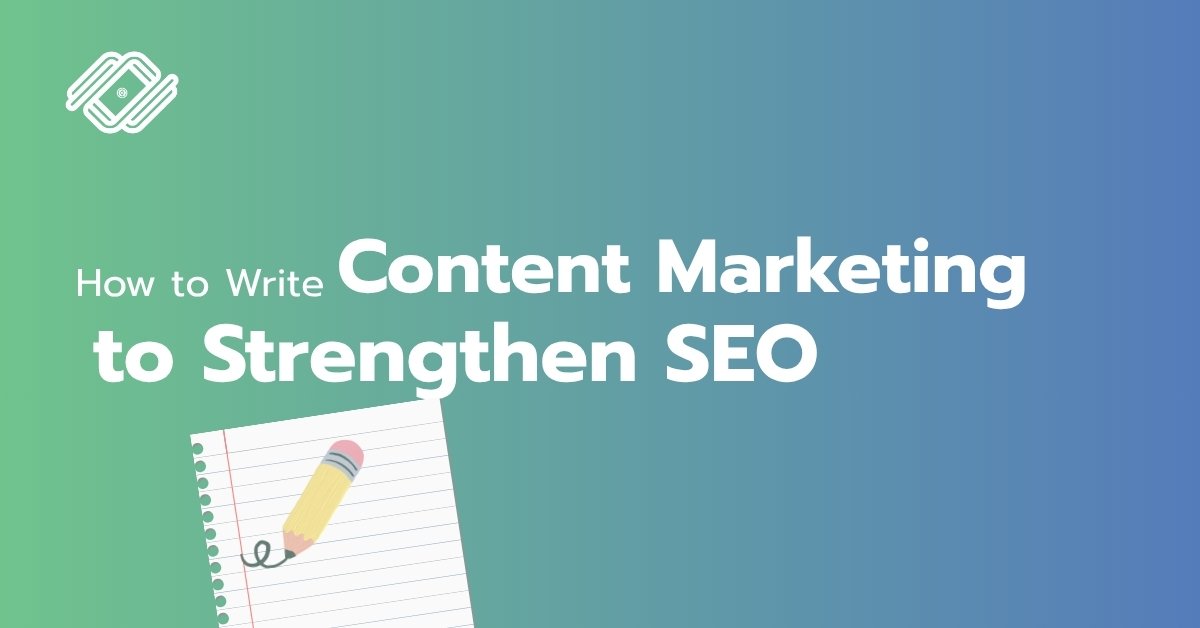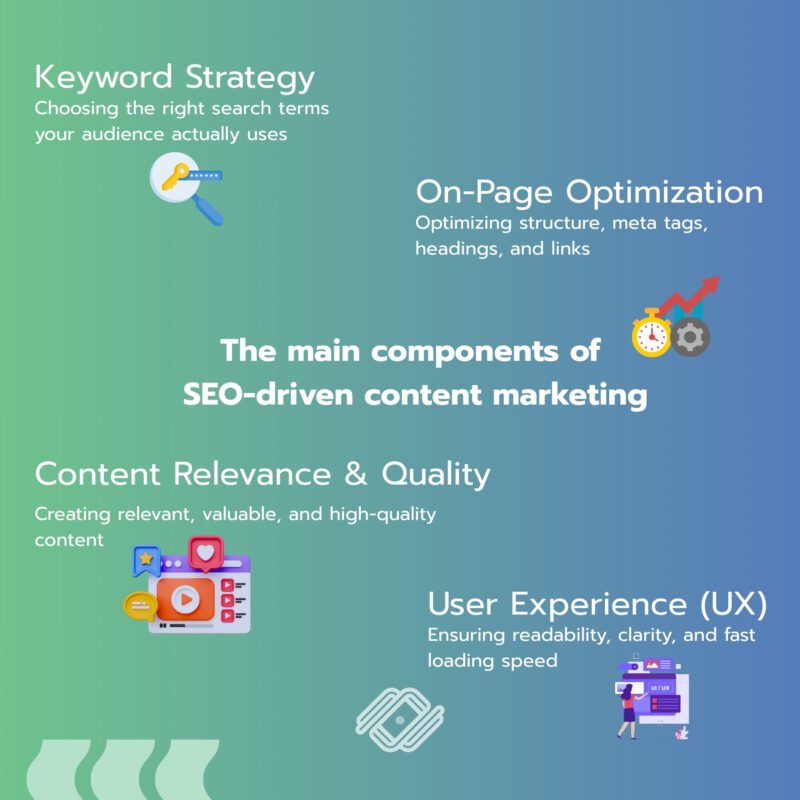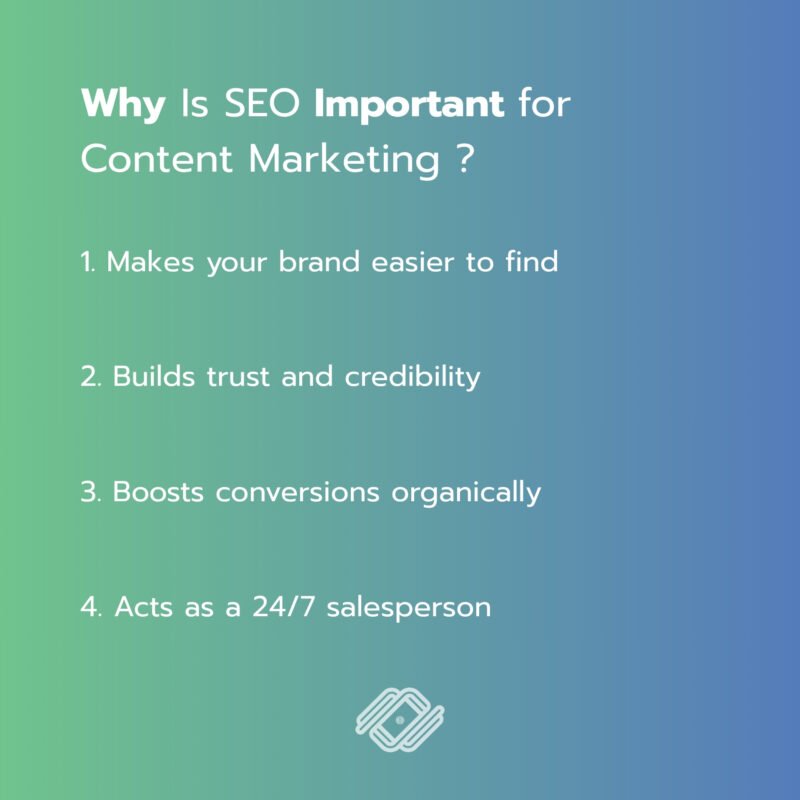
In today’s highly competitive digital landscape, Content Marketing is no longer just about creating articles for people to read. It’s a powerful tool for building credibility, brand image, and higher Google search rankings. The key lies in
combining high-quality content with effective Search Engine Optimization (SEO) strategies.
What Is SEO for Content Marketing?
SEO for Content Marketing is the process of creating and optimizing content to align with how search engines like Google work, with the goal of ranking higher on Search Engine Results Pages (SERPs) and reaching the most relevant audiences effectively.
The main components of SEO-driven content marketing include:

- Keyword Strategy- Choosing the right search terms your audience actually uses
- On-Page Optimization – Optimizing structure, meta tags, headings, and links
- Content Relevance & Quality – Creating relevant, valuable, and high-quality content
- User Experience (UX) – Ensuring readability, clarity, and fast loading speed
Why Is SEO Important for Content Marketing?

- Makes your brand easier to find: When your content ranks on Google, potential customers discover your brand before your competitors.
- Builds trust and credibility: People tend to view top-ranking websites as experts or trustworthy sources.
- Boosts conversions organically: SEO attracts people who are already interested in your topic—resulting in higher-quality leads without paid ads.
- Acts as a 24/7 salesperson: Well-optimized content continues to educate, answer questions, and influence decisions around the clock.
Tips for Effective SEO Content Marketing

- Do in-depth keyword research:
Use tools like Google Keyword Planner, Ahrefs, or Ubersuggest to find real search queries. Combine main keywords with LSI (related) keywords naturally.
- Write for humans first, optimize for Google second:
Provide real value to readers. Integrate keywords naturally, keep the tone friendly, and avoid keyword stuffing.
- Structure content for readability
Use headings (H2, H3), bullet points, and short paragraphs. Ensure the text is scannable on both mobile and desktop.
- Add value with visuals:
Use images, infographics, or videos to make complex ideas easier to understand and reduce bounce rates.
- Use internal and external links wisely:
Internal links help users explore your site more; external links to reliable sources strengthen credibility.
- Keep your content fresh:
Update at least every 6 months to keep information relevant and align with current trends or algorithm changes.
Tips for Writing Content That Appeals to Both “Readers” and “Google”
For Readers
– Write in a clear and easy-to-understand way that provides real value.
– Use friendly language that reflects your brand’s personality.
– Build engagement with readers through questions, storytelling, or interactive elements.
– Include attractive and relevant visuals.
– End with a clear and compelling call to action.
For Google
– Use proper heading structure (H1–H3).
– Include keywords in the title and the first paragraph.
– Add meaningful meta titles and descriptions.
– Name image files and write alt text that aligns with the content.
– Check and optimize your page loading speed.
Conclusion
Writing SEO-empowered Content Marketing isn’t about keyword stuffing — it’s about creating real value for readers while signaling to Google that your content is genuinely useful. When done right, your content won’t just rank high — it will also resonate deeply with your audience.
Source: icat.co.th
If you want your business to reach online customers and achieve sustainable marketing results, we are happy to provide consultation on what you need.
For further inquiries, contact us at: Tel. 093 696 4498 Line OA: https://lin.ee/po8XduU E-mail: mongkontep@pkindev.com
Inverz Solutions Co., Ltd. has received numerous awards for its achievements
